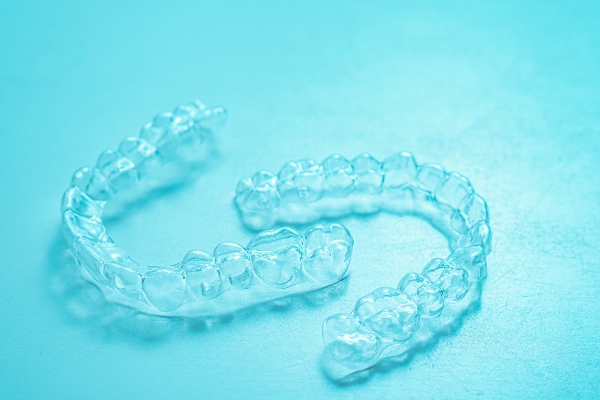 Orthodontics aims to straighten teeth and address a variety of issues that can develop as a result of poor teeth or jaw alignment. Issues that can be treated with orthodontic devices include spaces between teeth, crossbites, and crooked teeth.
Orthodontics aims to straighten teeth and address a variety of issues that can develop as a result of poor teeth or jaw alignment. Issues that can be treated with orthodontic devices include spaces between teeth, crossbites, and crooked teeth.
Orthodontics can also be used as preventative dentistry because it can be used to fix issues with teeth alignment before they become an issue later in life. Teeth-straightening devices, like clear aligners and braces, work by applying force on the wearer’s teeth. Over time, this pushes the person’s teeth to a healthier alignment.
Four common issues that orthodontics can treat
Here are dental issues that can be fixed with teeth-straightening treatments.
1. Malocclusion
Occlusion is the term for how a person’s teeth line up with one another and fit inside the mouth. A person has a malocclusion when their teeth or jaw do not line up properly. The result is often an issue like a crossbite, overbite, or underbite.
Poor teeth alignment can lead to difficulty chewing, speaking, or swallowing. It can also cause problems with the temporomandibular joints, which often create pain and discomfort. Malocclusion can lead to other problems, like changes to a person’s facial structures, frequent cuts to soft tissues like the tongue, and speech impediments. Orthodontics can treat these issues with treatments like the installation of braces/clear aligners, tooth reshaping, and as a last resort, surgery.
2. Teeth grinding
Teeth grinding can lead to teeth being worn down due to the forces placed on them as they grind against each other. Medically termed bruxism, this condition is more likely to occur during sleep, and it can be caused by a variety of things, like stress or a bad bite. Treating any malocclusion that a patient has can help as a treatment for teeth grinding.
3. Tooth protrusion
This is often the result of the upper jaw sticking out farther than the lower jaw, leading to uneven pressure on teeth and bite issues. It can also affect the development of a person’s jawbone and other facial structures.
Severely protruding teeth can even make it difficult to close the lips properly. The condition can lead to the loss of jawbone tissue if left untreated.
4. Spaces between teeth
Spaces between teeth can ruin the way that a person’s smile looks and can lead to increased self-consciousness. It also increases the risk of gum disease, since gum tissue left exposed due to spaces between teeth are more likely to be infected by oral bacteria. Devices like clear aligners and braces can be used to move teeth closer together, eliminating any natural spaces between them.
Straighter teeth can lead to improved health and quality of life
Straightening your teeth provides more benefits than just an improved smile. It also protects your mouth against issues like tooth decay and gum disease, and it can serve as a treatment for issues like teeth grinding. Give us a call or stop by our Tustin clinic to set up an appointment with our dentist.
Request an appointment or call FitSmiles Orthodontics at 714-782-0217 for an appointment in our Tustin office.
Related Posts
As teenagers grow up, they may need orthodontic treatment, particularly if they have crooked teeth or gaps in their smile. These issues can affect their self-esteem and take a toll on their mental health if they are left unaddressed. Clear aligners are an effective treatment for teens to help correct misaligned or crowded teeth. In…
Orthodontics is a field of dentistry that specializes in correcting misaligned teeth and jaws, helping the appearance and function of your smile. If you have crooked teeth, an uneven bite, or other dental issues, you may be considering orthodontic treatment. Here we will explore the different options of orthodontic treatments available, so you can better…
Orthodontics can help address issues with your bite and provide a variety of benefits, like improved oral hygiene, improved speech, and an improved smile. Orthodontics works best when patients are around the ages of 9 to 14. At this point, the jaw and facial structures are still developing, but most of the permanent teeth should…
